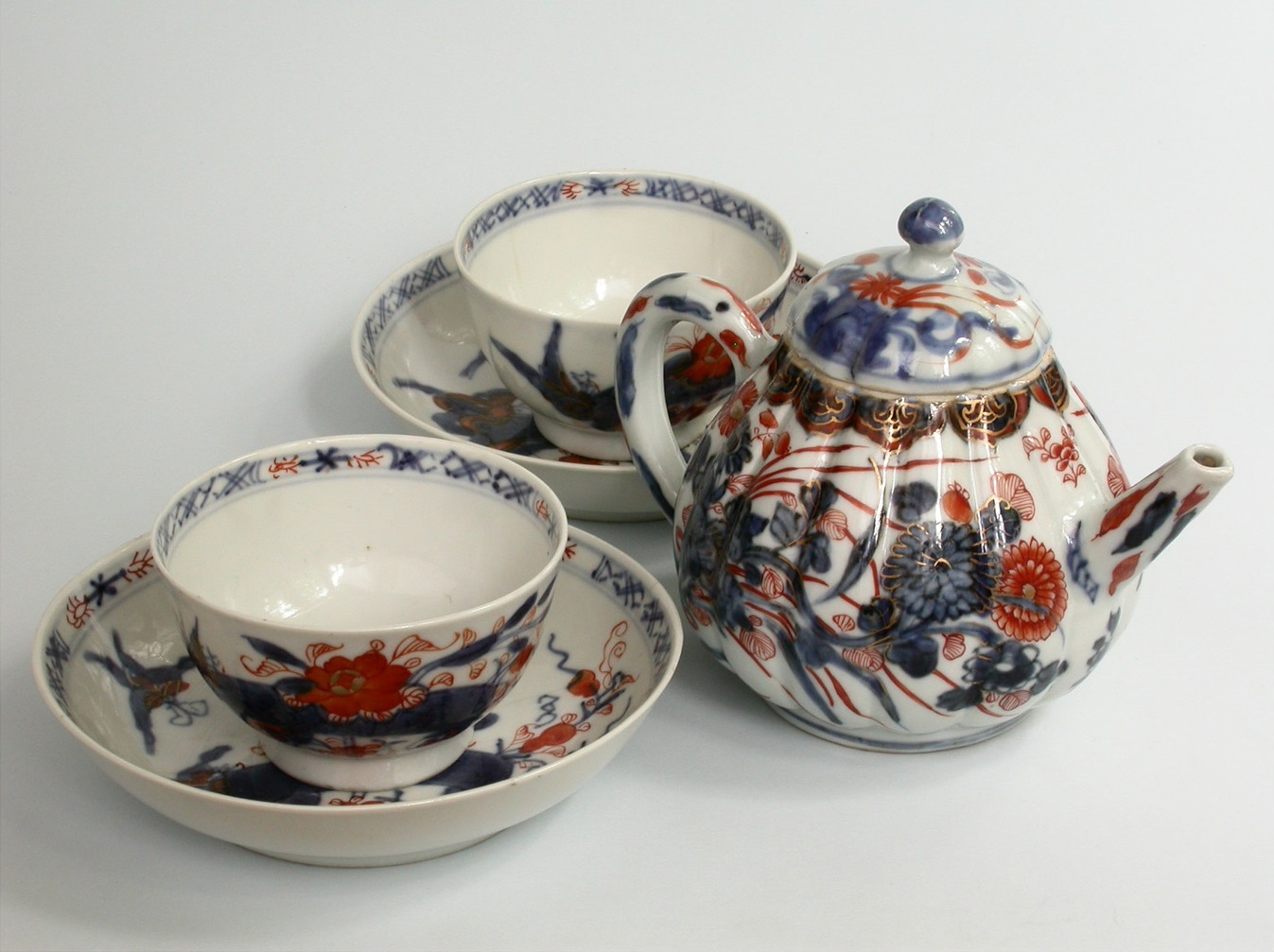
As a nation trading with Europe, China has a history extending back more than two thousand years. Famously, the Roman Empire imported vast quantities of silk from China via a chain of intermediaries along the overland route known as the Silk Road. But it was not really until the 16th century, when European powers started to find their own way by sea to the ports of the South China coast that other mysterious goods were brought to the West – tea, lacquer-ware, jade and porcelain.
Chinese potters were accustomed to making wares specifically for export, having traded for centuries with the Islamic world. By the end of the 16th century they had developed a style featuring blue-painted animals and plants that was popular with the Portuguese, the first Europeans to reach them. The style was known as carrack porcelain after the kind of ships in which it was exported. When Holland seized much of the China trade from Portugal in the next century the style became known as kraak, the Dutch version of the same word.
In the course of the 17th century Chinese export wares were increasingly decorated in enamels - black, red, yellow, blue, violet and, predominantly, green – creating the so-called famille verte range of colours, a style as popular in China as here. Famille rosewas developed later, from about 1720, and consisted of the same colours, but with rose-pink dominating, and white enamel details. It is thought that the previously unknown technique of white enamelling had its origin in wares travelling against the flow – from Europe into China.
The collection includes examples of all the above kinds of decoration, and of at least one other important type. Chinese Imari was a style adopted from the Japanese in the early 18th century and largely reserved for export ware. Essentially it is a combination of underglaze blue, red enamel and gilding, together with, sometimes, secondary colours like green and black.
Any style might be employed for armorial porcelain – wares decorated with the crests and mottoes of the aristocracy of Europe. Designs were supplied by whatever family or institution required the ware (commonly a large and impressive dinner or tea service) and were sent to Canton (Guangzhou) where specialised enamelling studios had been established to execute patterns intended solely for export. More generic designs were applied where the ware itself was made, nearly 400 miles north of Canton in the potteries of Jingdezhen.
Britain’s turn as the dominant European nation in the China trade spanned most of the 18th century, preceded in 1688 by an end to hostilities between ourselves and the Dutch that allowed us to import from the far-east without interference from their forces. The UK trade was managed by the British East India Company – an immensely powerful affiliation of merchants. Most of the Chinese items in the Hampshire Museums Service collection must have been brought to this country on BEIC ships, either by the Company itself or as private cargo.
The appeal of the first Chinese porcelain to reach the west lay in the exoticism of its design and decoration and in its whiteness and translucency – qualities that could not be reproduced by European potters at the time. Porcelain comparable to that from China was not made in the west until the first decade of the 18th century, when it was achieved at Meissen in Saxony. Here we had to wait until the 1750s to see anything comparable from a British factory, and that product, though beautiful, was strictly speaking an artificial porcelain made of ingredients not used by the Chinese.
However, UK potters quickly adopted Chinese styles of ornament. Many designs, especially in blue and white, were copied and modified for the English taste, the famous Willow Pattern being just one. Gradually during the last quarter of the 18th century, English ‘soft paste’ porcelain gained ground on its rival, marked, in 1791, by the decision of the British East India Company to import no more Chinese ware on its own account. Then, with the 19th century, came the rapid rise of bone china, effectively ending large-scale importation of Chinese porcelain to Britain.


